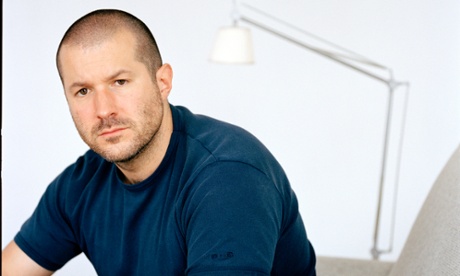
Apple’s chief designer, Jonathan Ive, is fun to have a pint with – and insists on his children building physical, not virtual, objects, according to an in-depth profile in Vogue magazine.
He also thinks that design schools should focus more on the physical, not the virtual.
Ive also showed off the company’s new Watch to a journalist from Vogue three weeks before its launch, in a guarded room under conditions that the writer said felt “like a matter of national security”.
The revelation comes as part of a profile in the October issue of the fashion bible, and points towards the iPhone maker’s intent to position its smartwatch not as a piece of technology, but as an item aimed at the fashion-conscious.
The 3,500-word profile provides a rare insight into the biography and thinking of Ive, who rarely gives interviews and hardly ever speaks in public. The article, by Robert Sullivan, suggests Ive – who has been at Apple since 1992 – is a polite, humble and thoughtful man with an incredible focus on detail.
It also reveals that he was the broker for who resuscitated a deal between Apple and U2 on the original Project Red scheme when he was sent by Steve Jobs to talk to Bono in an Irish pub. Of Ive, U2’s frontman says:
“Jony is deadly serious … He is also serious fun to be around. When you go out for a pint with Jony, it’s kind of like going for a pint with the future, which is cool except you know he’s not telling you what they’ve really got planned.”
Sullivan quotes Ive, who suggested he “struggled” with computers when at school:
“Isn’t that curious?” he says now. “Because if you tasted some food that you didn’t think tasted right, you would assume that the food was wrong. But for some reason, it’s part of the human condition that if we struggle to use something, we assume that the problem resides with us.”
Sullivan reveals that Ive is trying to follow his father by working with his twin boys on physical designs of things:
“My boys are 10, and I like spending time with them doing stuff that I did, which is drawing and making things – real things, not virtual things.”
In that, Ive – the designer of gadgets of distraction such as the iPad and iPhone - sounds like Steve Jobs, who banned his children from using iPads. According to Sullivan, Ive thinks design schools should keep a focus on traditional skills with physical objects, as he did:
“I think it’s important that we learn how to draw and to make something and to do it directly,” he says, “to understand the properties you’re working with by manipulating them and transforming them yourself.”
Of the as-yet unreleased Watch, Sullivan describes Ive’s enthusiasm for a product which has been in development for three years:
As you watch Ive walk off, politely thanking people, you recall that he closed up his private presentation by asking you to listen closely to a watchband as it is pulled off and then reconnected. “You just press this button and it slides off, and that is just gorgeous,” he was saying. He encouraged you to pause. “But listen as it closes,” he said. “It makes this fantastic k-chit.” He was nearly whispering. And when he said the word fantastic, he said it softly and slowly – “fan-tas-tic!” – as if he never wanted it to end.
Ive also spent much of his meeting with Sullivan discussing his enthusiasm for classic timekeeping pieces:
He describes the trajectory of clocks to watches: from a public clock in a Bavarian square to timepieces owned by royalty, to military chronometers, to the watch’s arrival, only at the beginning of the twentieth century, on the wrist. “It’s fascinating how people struggled with wearing this incredibly powerful technology personally.”
Ive’s friend, Hong Kong-born businessman David Tang – a cigar lover – recalls how Ive once gave him “finely crafted wooden boxes, containing large, engraved Ive-designed ashtrays” for his birthday.
The profile also reveals that Ive was “delighted” when he was given a gold Blue Peter badge – the highest honour from the British children’s TV programme.
Apple’s Watch was previewed at this week’s Paris Fashion Week, with Vogue US editor Anna Wintour and Chanel creative director Karl Lagerfeld checking out the wearable at high fashion store, Colette.
British Vogue editor Alexandra Shulman has previously reviewed the iWatch, which will be on sale sometime in early 2015.
• Smartwatches: from Apple Watch to the Moto 360, what’s on offer?

